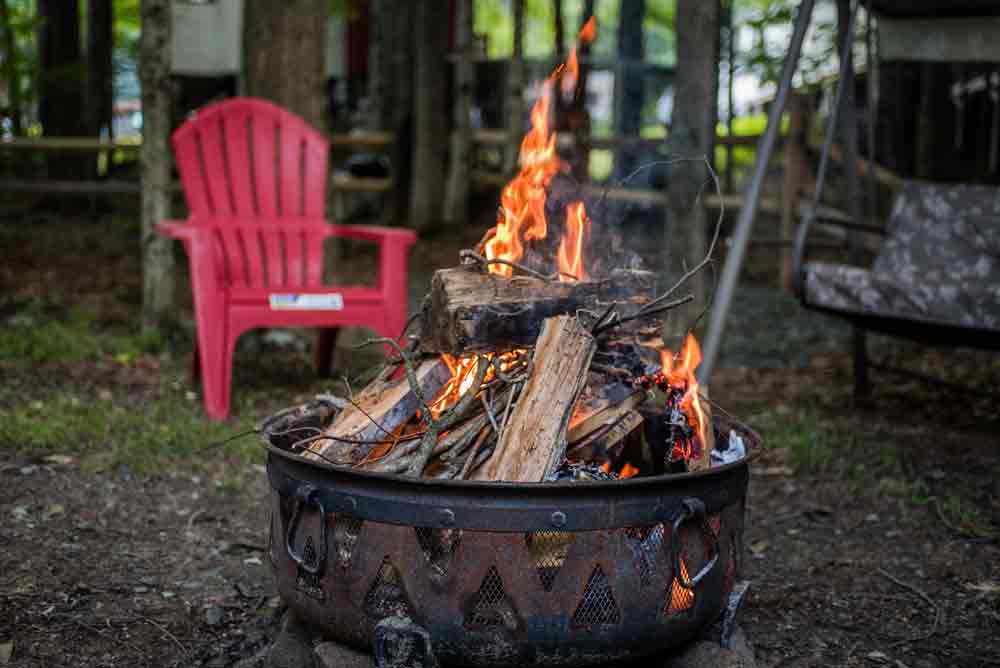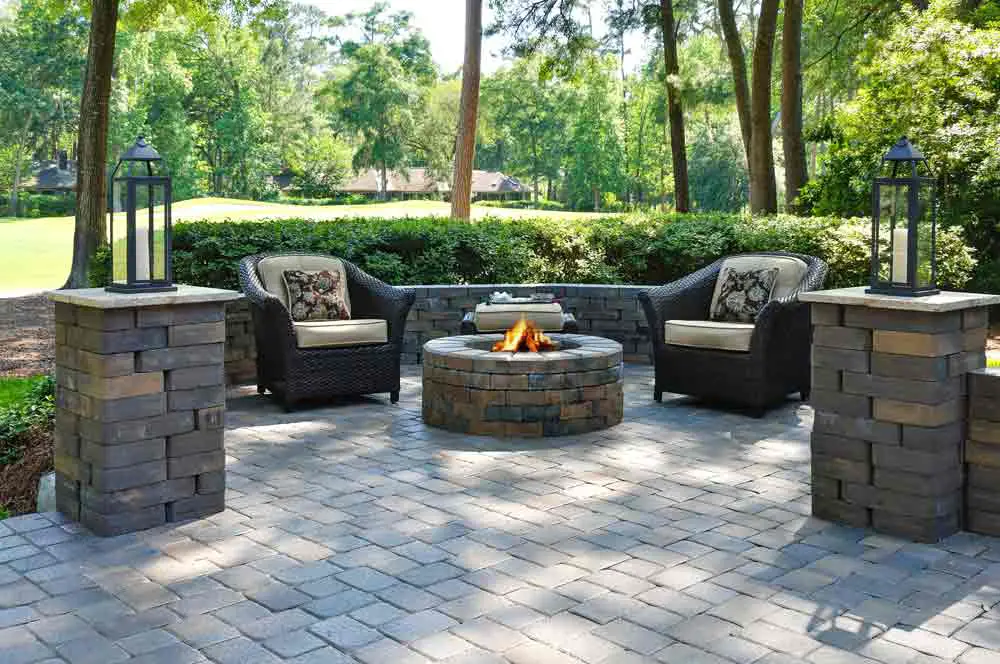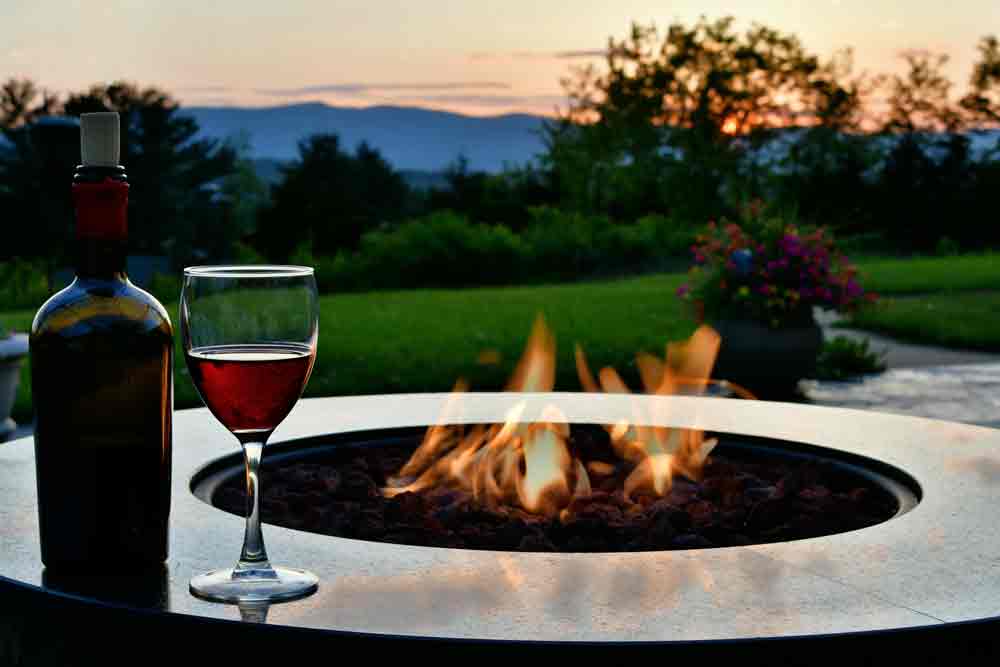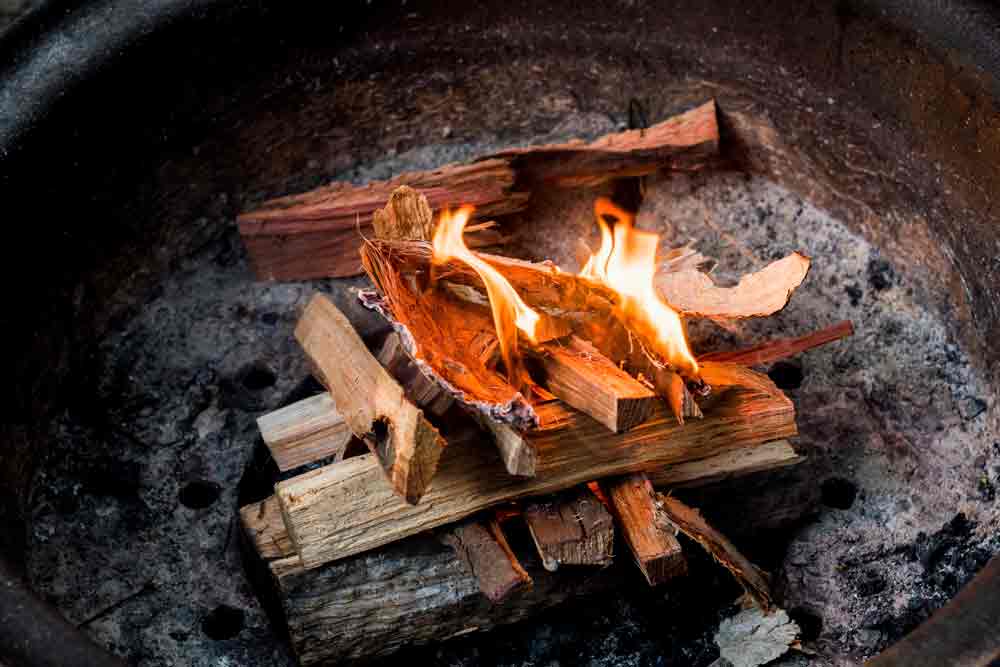Yes, a fire pit typically needs holes in the bottom to allow airflow and ventilation. This improves and maintains the fire by providing oxygen to help improve combustion. The size of the holes can vary depending on the design of the fire pit, but it is generally recommended that they are no bigger than ¼ inch (6mm).
When building a fire pit, it is essential to consider the size and quantity of hole(s) needed to give adequate ventilation. Generally, a single 3-inch (7.6 cm) diameter hole should be sufficient for small fires. At the same time, giant firepits may require multiple holes or slotted vents – usually four inches (10 cm) apart – at different heights on each side of the pit wall. This allows oxygen to flow in from both low and high levels to reach all areas of the fire inside your pit.
Ventilation also promotes better combustion by reducing pressure inside the chamber walls and allowing smoke gases more accessible escape routes out through their channels rather than trapping them near oxygenated fuel sources, which can cause flare-ups or flashovers commonly seen with campfires or cooking fires in makeshift barbecues grills constructed from metal drums or barrels with no ports for airflow or exhaust gas release. This lack of necessary openings causes dangerous bursts of flame from built-up internal pressures not seen when open-air designs are used with adequate venting systems installed correctly along its walls.
How Many Holes Should a Fire Pit Have?
When it comes to fire pits, the number of holes needed depends on the size of the pit. Generally, experts recommend placing a two-inch vent hole between every 24 or 36 inches around the base. This will ensure proper airflow and oxygen supply to keep your fire burning. Additionally, having more holes can help keep the bottom of your fire pit cool and prevent embers from falling through.
It is important to note that drilling too many holes can cause rusting and quicken the end of life of your fire pit. Therefore, it is best to consult with an expert before adding holes to determine how many you need for your specific fire pit.
What Size Should the Holes Be?
There are a few factors to consider when it comes to hole size. Generally speaking, the diameter of the hole should be at least 1/16″ greater than the thickness of the material being drilled. For aluminum or other soft materials, a minor hole diameter should be used that is 1/64″ more significant than the primary diameter of the thread being tapped. The exact size will depend on the thread type and material used.
It is also essential to consider clearance holes when calculating hole sizes. Clearance holes are slightly larger than tapped holes, allowing for easier insertion of screws or bolts. The exact size will vary depending on the type of screw or bolt being used.
In addition, it is essential to consider any specific requirements for your application when determining hole sizes. For example, if you are working with glass, there may be additional restrictions on minimum hole sizes.
When determining hole sizes, it is essential to consider all relevant factors, such as material and thread types, to ensure that your application meets all requirements.
What Is the Purpose of Holes in A Fire Pit?
The purpose of holes in a fire pit is to provide oxygen to the flames. Without oxygen, the fire will not burn properly and may even go out. Holes also help to keep the base of the fire pit cool, as well as allow for proper drainage. Additionally, ventilation holes can help reduce smoke from the fire.
Ensuring enough air vents for proper airflow is essential when building a fire pit. The size and positioning of these holes should be considered when constructing your fire pit. Generally, you should place a single 2-inch hole every 24 to 36 inches around the base of the pit.
Overall, holes in a fire pit are essential for providing oxygen to the flames and ensuring your fire burns safely and efficiently.
Are There Any Benefits to Having Holes in A Fire Pit?
Having holes in a fire pit can be beneficial for several reasons. Firstly, they allow oxygen to reach the flames, essential for burning the fire. Secondly, the holes help keep the fire pit’s base cool and prevent it from overheating. Finally, drainage holes at the bottom of the fire pit can help prevent water from accumulating and causing rust or other damage. All in all, having holes in a fire pit is essential to ensure it works properly and safely.
Are There Any Disadvantages to Having Holes in A Fire Pit?
One potential disadvantage to having holes in a fire pit is that it can allow too much oxygen to reach the fire and cause the flames to flare up too high. This can increase the risk of accidentally burning something nearby or even yourself! Additionally, if there are gaps between the stones that make up the fire pit, embers may escape through them. Finally, ash and debris may accumulate in the holes, which it could cause clogging and reduce airflow. It would be best to use proper ventilation techniques to avoid these issues when building your fire pit with holes.
What Are Some Other Options for Fire Pits?
Other than a fire pit with holes, there are several options for fire pits. For example, you can use a gas-powered fire pit that does not require oxygen to ignite the flame. Additionally, you can install a standard fire pit made from bricks or stones and add an air vent at the bottom for proper airflow. Fire bowls and chimineas are also popular options as they have their built-in ventilation system. Lastly, some people prefer to build an aboveground fire pit separate from the ground, such as one made from metal or concrete.
What Are Some Tips for Using a Fire Pit?
Here are some tips for using a fire pit:
- Ensure the fire pit is placed at least 10 feet away from structures or combustible material.
- Use seasoned, dry wood; never burn green or wet wood, as it can produce more smoke and create a dangerous situation.
- Always ensure proper ventilation when building your fire pit to reduce the risk of too much oxygen reaching the flames.
- Don’t overfill the fire pit with logs; instead, only use what’s necessary for a manageable flame size.
- If possible, build a ring of stones around the pit to help contain stray embers from escaping.
- Never leave a lit fire unattended; always put it out before leaving the area or going to bed.
Conclusion
In conclusion, while it is possible to have a fire pit without holes in the bottom, it could be bettered and hazardous due to the build-up of smoke and gases. Therefore, proper ventilation in the form of air holes at the bottom of your fire pit will ensure your experience is safe and enjoyable.







